Abstract
The efficiency of plating of wild-type λ on a host lysogenic for P2 is less than 10-6, and only a small number of infected cells produce progeny phage. Lambda can adsorb and inject its DNA normally in such cells; the DNA can circularize and is not nicked or degraded, but replication is severely impaired. Mutants of P2, which as prophages no longer interfere with λ, have been isolated and found to be recessive to wild type, implying that P2 prophage codes for a diffusible product involved in λ interference. The P2 gene product responsible for preventing λ growth also kills recombination-deficient bacteria of the recB and recC classes under conditions where P2 does not normally kill the host. Mutants of λ that are resistant to interference are recessive to wild-type λ. Thus λ actively participates in its own interference. The λ-mutants that are resistant to interference are unable to synthesize at least two nonessential proteins. In addition, they are unable to grow on recombination-deficient bacteria of the recA class, but they can grow on recA recB double mutants.
Full text
PDF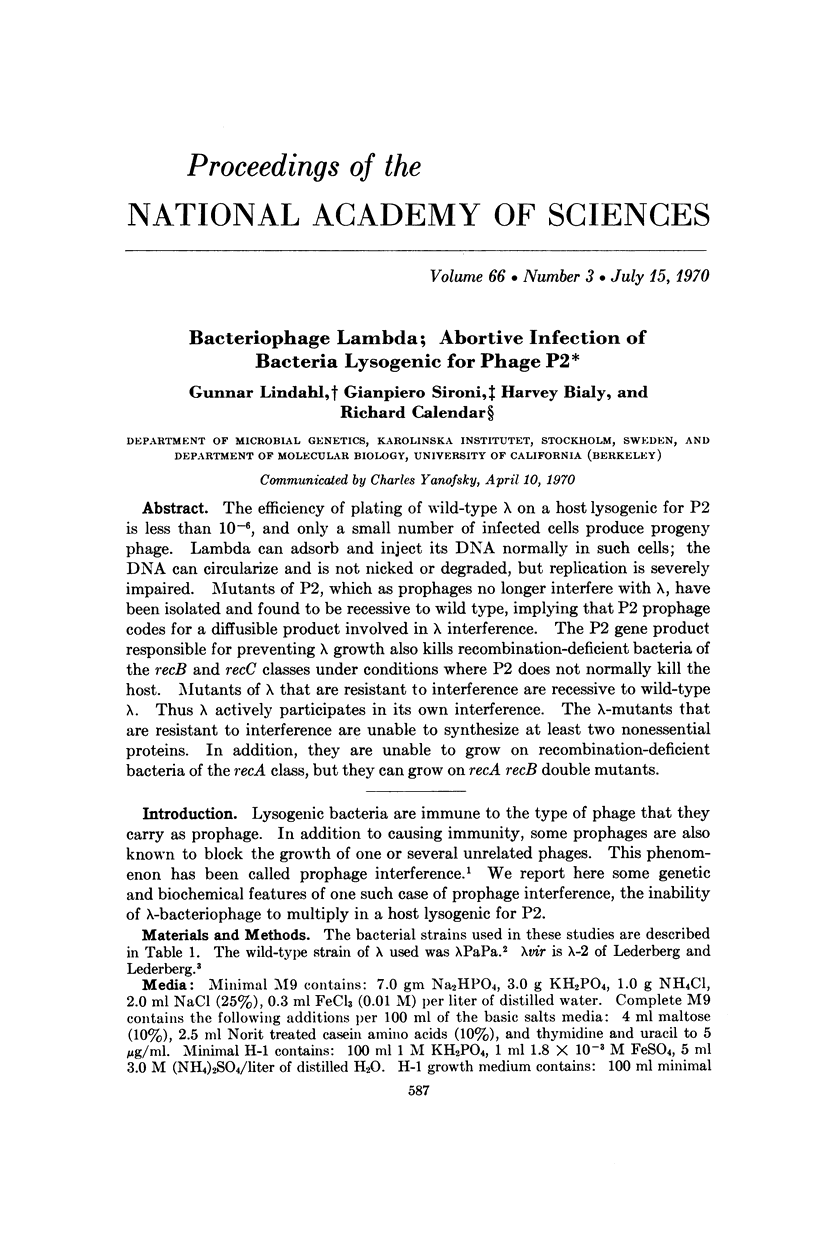
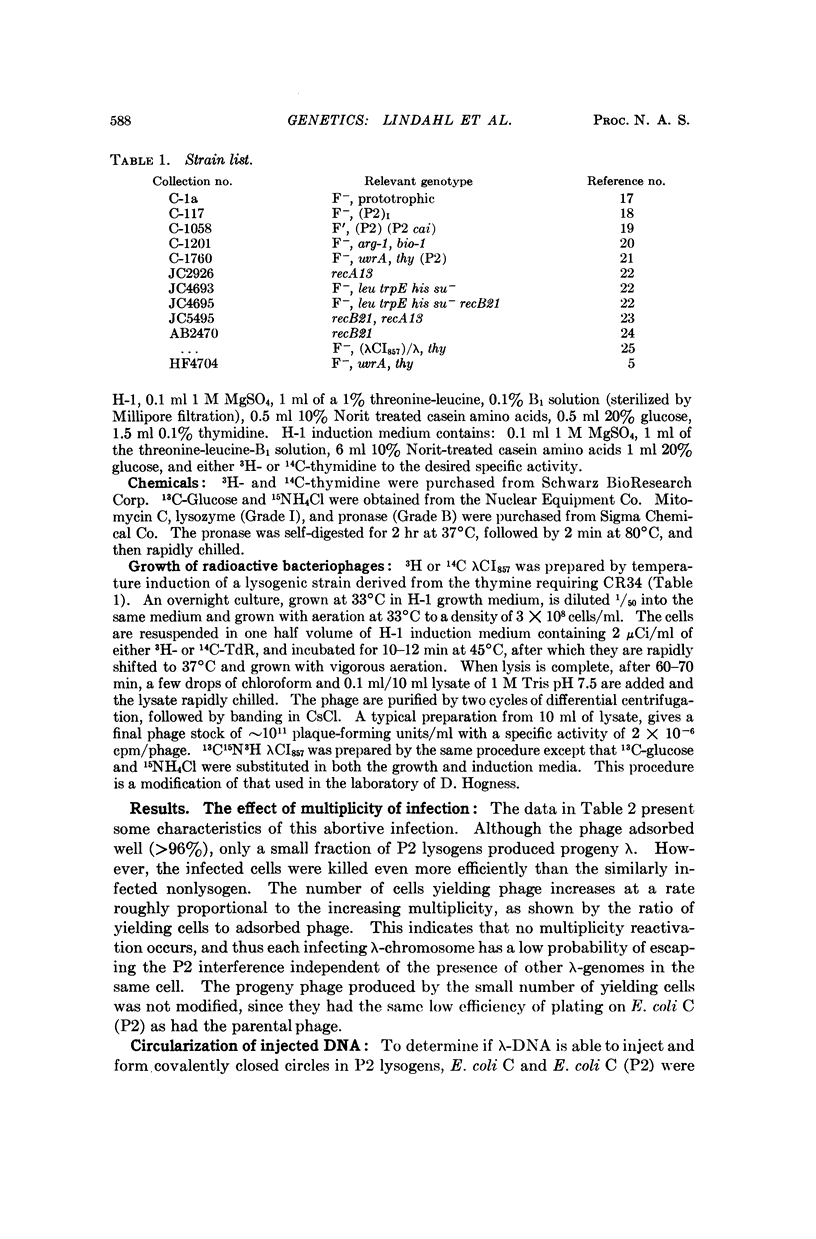
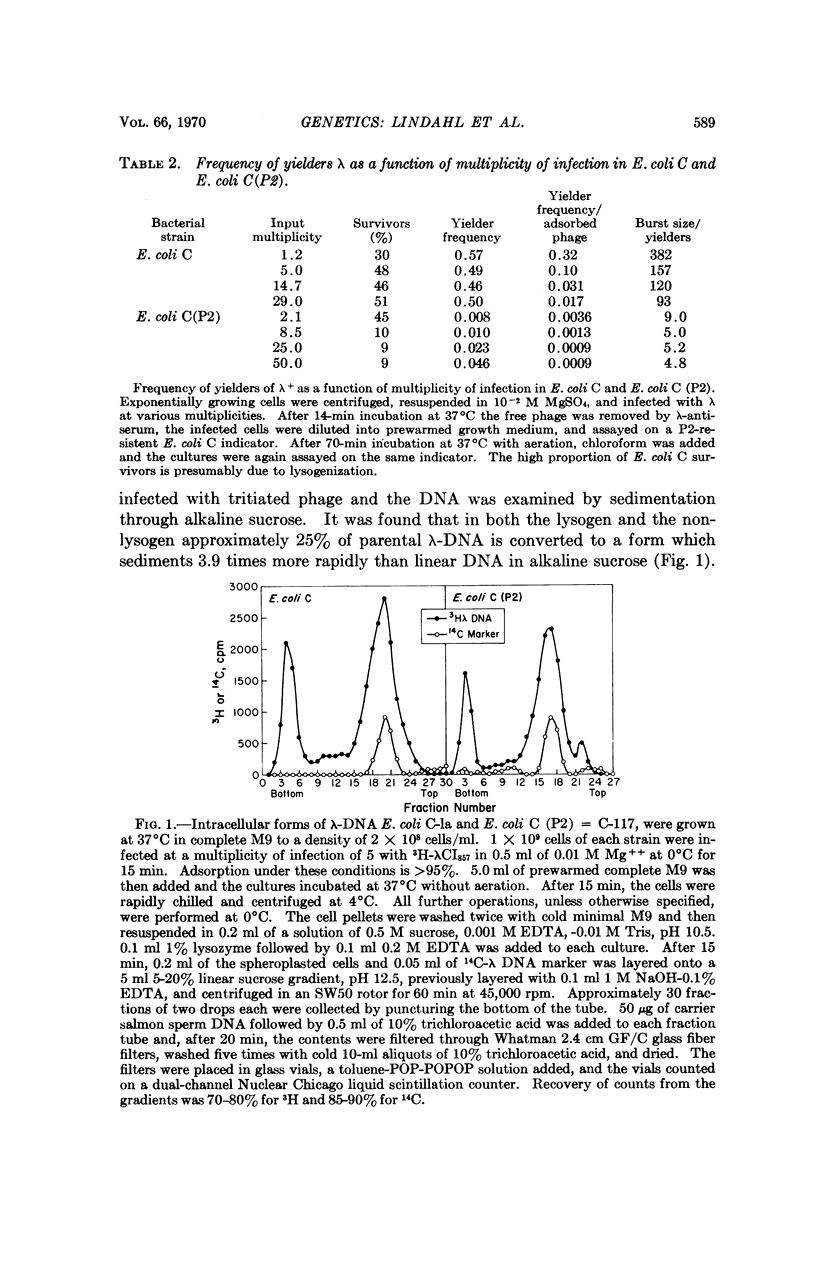
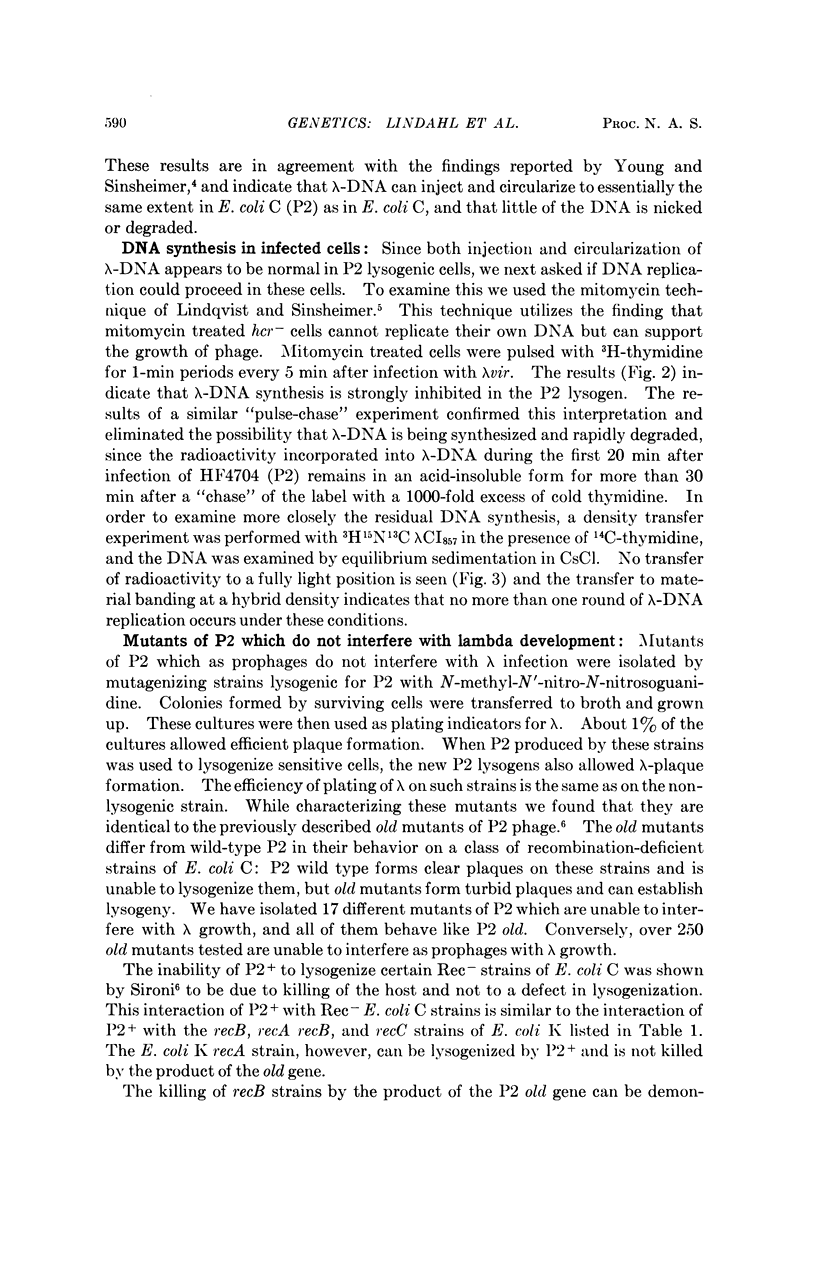
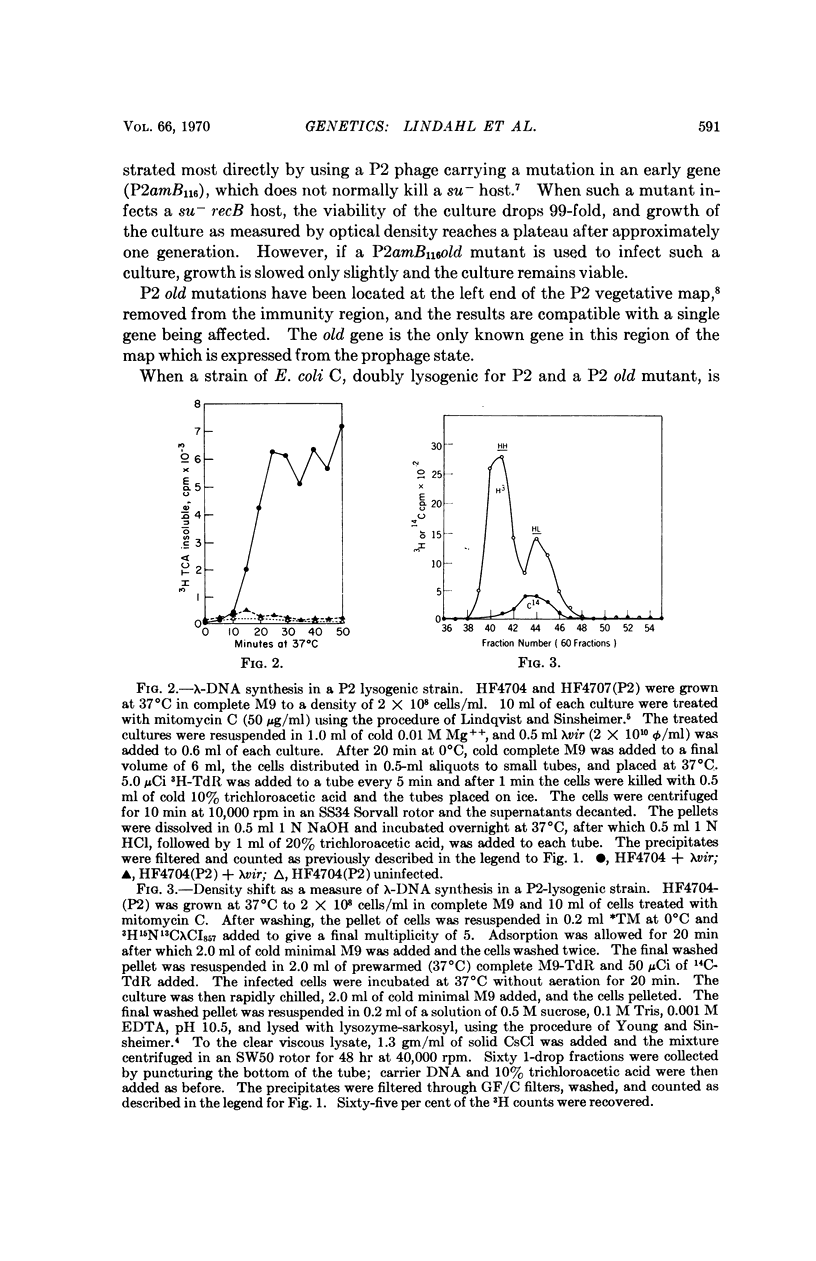
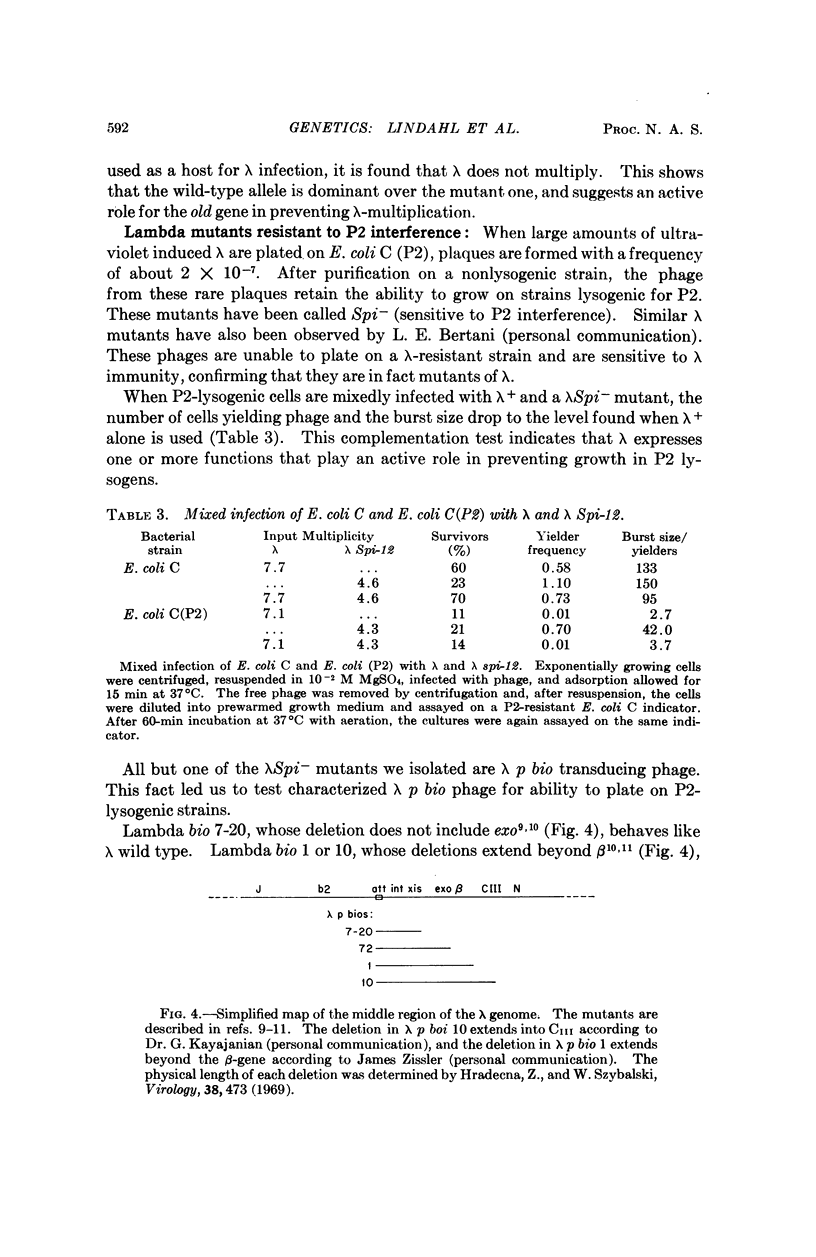
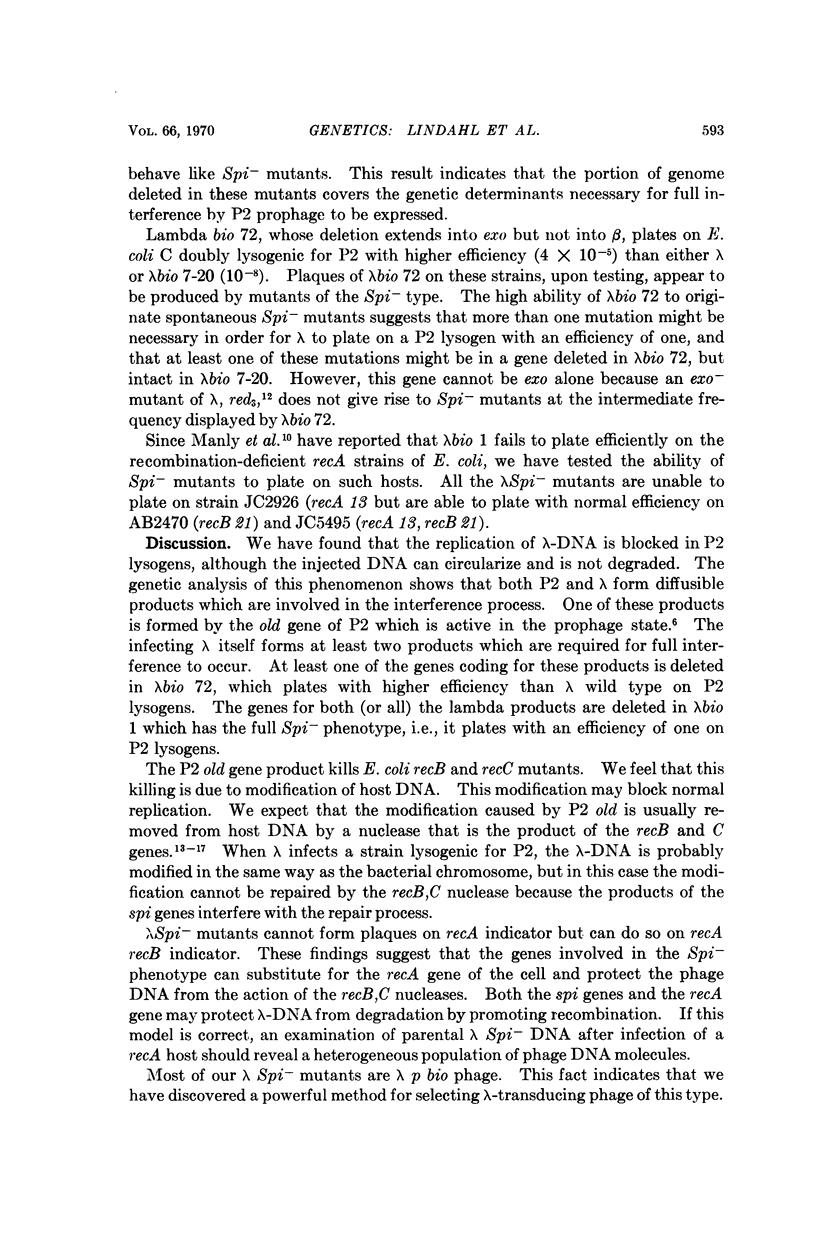
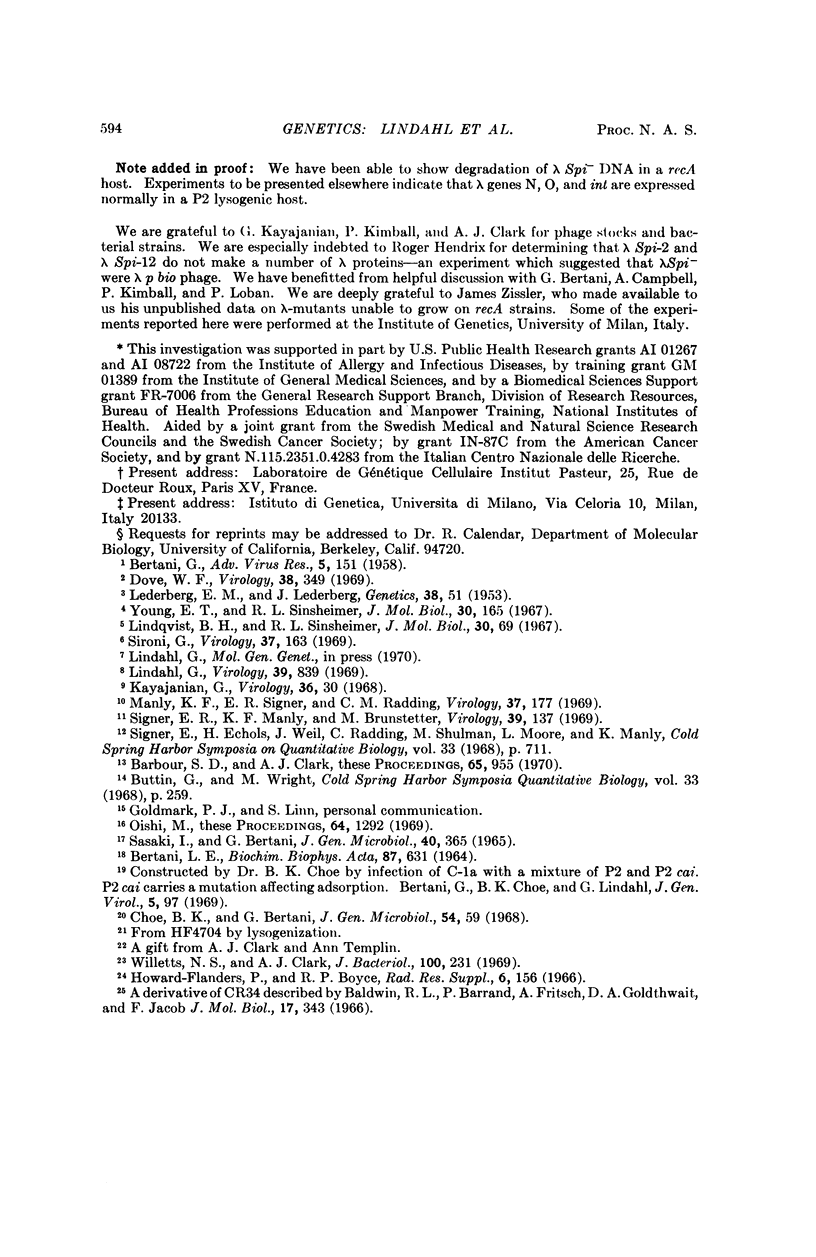
Selected References
These references are in PubMed. This may not be the complete list of references from this article.
- BERTANI G. Lysogeny. Adv Virus Res. 1958;5:151–193. doi: 10.1016/s0065-3527(08)60673-9. [DOI] [PubMed] [Google Scholar]
- BERTANI L. E. LYSOGENIC CONVERSION BY BACTERIOPHAGE P2 RESULTING IN AN INCREASED SENSITIVITY OF ESCHERICHIA COLI TO 5-FLUORODEOXYURIDINE. Biochim Biophys Acta. 1964 Aug 12;87:631–640. doi: 10.1016/0926-6550(64)90281-6. [DOI] [PubMed] [Google Scholar]
- Baldwin R. L., Barrand P., Fritsch A., Goldthwait D. A., Jacob F. Cohesive sites on the deoxyribonucleic acids from several temperate coliphages. J Mol Biol. 1966 Jun;17(2):343–357. doi: 10.1016/s0022-2836(66)80146-8. [DOI] [PubMed] [Google Scholar]
- Barbour S. D., Clark A. J. Biochemical and genetic studies of recombination proficiency in Escherichia coli. I. Enzymatic activity associated with recB+ and recC+ genes. Proc Natl Acad Sci U S A. 1970 Apr;65(4):955–961. doi: 10.1073/pnas.65.4.955. [DOI] [PMC free article] [PubMed] [Google Scholar]
- Buttin G., Wright M. Enzymatic DNA degradation in E. coli: its relationship to synthetic processes at the chromosome level. Cold Spring Harb Symp Quant Biol. 1968;33:259–269. doi: 10.1101/sqb.1968.033.01.030. [DOI] [PubMed] [Google Scholar]
- Choe B. K., Bertani G. Osmotic fragility of bacteria deprived of carbon dioxide. J Gen Microbiol. 1968 Nov;54(1):59–66. doi: 10.1099/00221287-54-1-59. [DOI] [PubMed] [Google Scholar]
- Dove W. F. Strains of phage lambda in current use. Virology. 1969 Jun;38(2):349–351. doi: 10.1016/0042-6822(69)90378-x. [DOI] [PubMed] [Google Scholar]
- Howard-Flanders P., Boyce R. P. DNA repair and genetic recombination: studies on mutants of Escherichia coli defective in these processes. Radiat Res. 1966;(Suppl):156+–156+. [PubMed] [Google Scholar]
- Kayajanian G. Studies on the genetics of biotin-transducing, defective variants of bacteriophage lambda. Virology. 1968 Sep;36(1):30–41. doi: 10.1016/0042-6822(68)90113-x. [DOI] [PubMed] [Google Scholar]
- Lederberg E M, Lederberg J. Genetic Studies of Lysogenicity in Escherichia Coli. Genetics. 1953 Jan;38(1):51–64. doi: 10.1093/genetics/38.1.51. [DOI] [PMC free article] [PubMed] [Google Scholar]
- Lindahl G. Genetic map of bacteriophage P2. Virology. 1969 Dec;39(4):839–860. doi: 10.1016/0042-6822(69)90021-x. [DOI] [PubMed] [Google Scholar]
- Lindqvist B. H., Sinsheimer R. L. The process of infection with bacteriophage phi-X174. XV. Bacteriophage DNA synthesis in abortive infections with a set of conditional lethal mutants. J Mol Biol. 1967 Nov 28;30(1):69–80. doi: 10.1016/0022-2836(67)90244-6. [DOI] [PubMed] [Google Scholar]
- Manly K. F., Signer E. R., Radding C. M. Nonessential functions of bacteriophage lambda. Virology. 1969 Feb;37(2):177–188. doi: 10.1016/0042-6822(69)90197-4. [DOI] [PubMed] [Google Scholar]
- Oishi M. An ATP-dependent deoxyribonuclease from Escherichia coli with a possible role in genetic recombination. Proc Natl Acad Sci U S A. 1969 Dec;64(4):1292–1299. doi: 10.1073/pnas.64.4.1292. [DOI] [PMC free article] [PubMed] [Google Scholar]
- Sasaki I., Bertani G. Growth abnormalities in Hfr derivatives of Escherichia coli strain C. J Gen Microbiol. 1965 Sep;40(3):365–376. doi: 10.1099/00221287-40-3-365. [DOI] [PubMed] [Google Scholar]
- Signer E. R., Manly K. F., Brunstetter M. A. Deletion mapping of the c-3-N region of bacteriophage. Virology. 1969 Sep;39(1):137–141. doi: 10.1016/0042-6822(69)90356-0. [DOI] [PubMed] [Google Scholar]
- Signer E., Echols H., Weil J., Radding C., Shulman M., Moore L., Manly K. The general recombination system of bacteriophage lambda. Cold Spring Harb Symp Quant Biol. 1968;33:711–714. doi: 10.1101/sqb.1968.033.01.080. [DOI] [PubMed] [Google Scholar]
- Sironi G. Mutants of Escherichia coli unable to be lysogenized by the temperate bacteriophage P2. Virology. 1969 Feb;37(2):163–176. doi: 10.1016/0042-6822(69)90196-2. [DOI] [PubMed] [Google Scholar]
- Willetts N. S., Clark A. J. Characteristics of some multiply recombination-deficient strains of Escherichia coli. J Bacteriol. 1969 Oct;100(1):231–239. doi: 10.1128/jb.100.1.231-239.1969. [DOI] [PMC free article] [PubMed] [Google Scholar]
- Young E. T., 2nd, Sinsheimer R. L. Vegetative bacteriophage lambda-DNA. II. Physical characterization and replication. J Mol Biol. 1967 Nov 28;30(1):165–200. doi: 10.1016/0022-2836(67)90251-3. [DOI] [PubMed] [Google Scholar]


